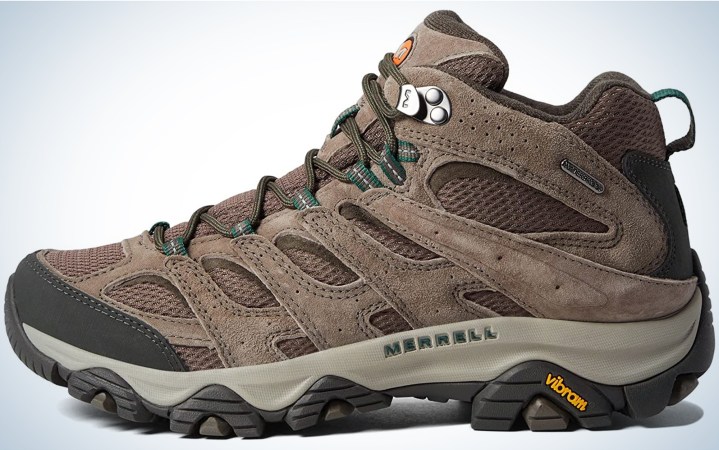How Fast Can a Bear Run?
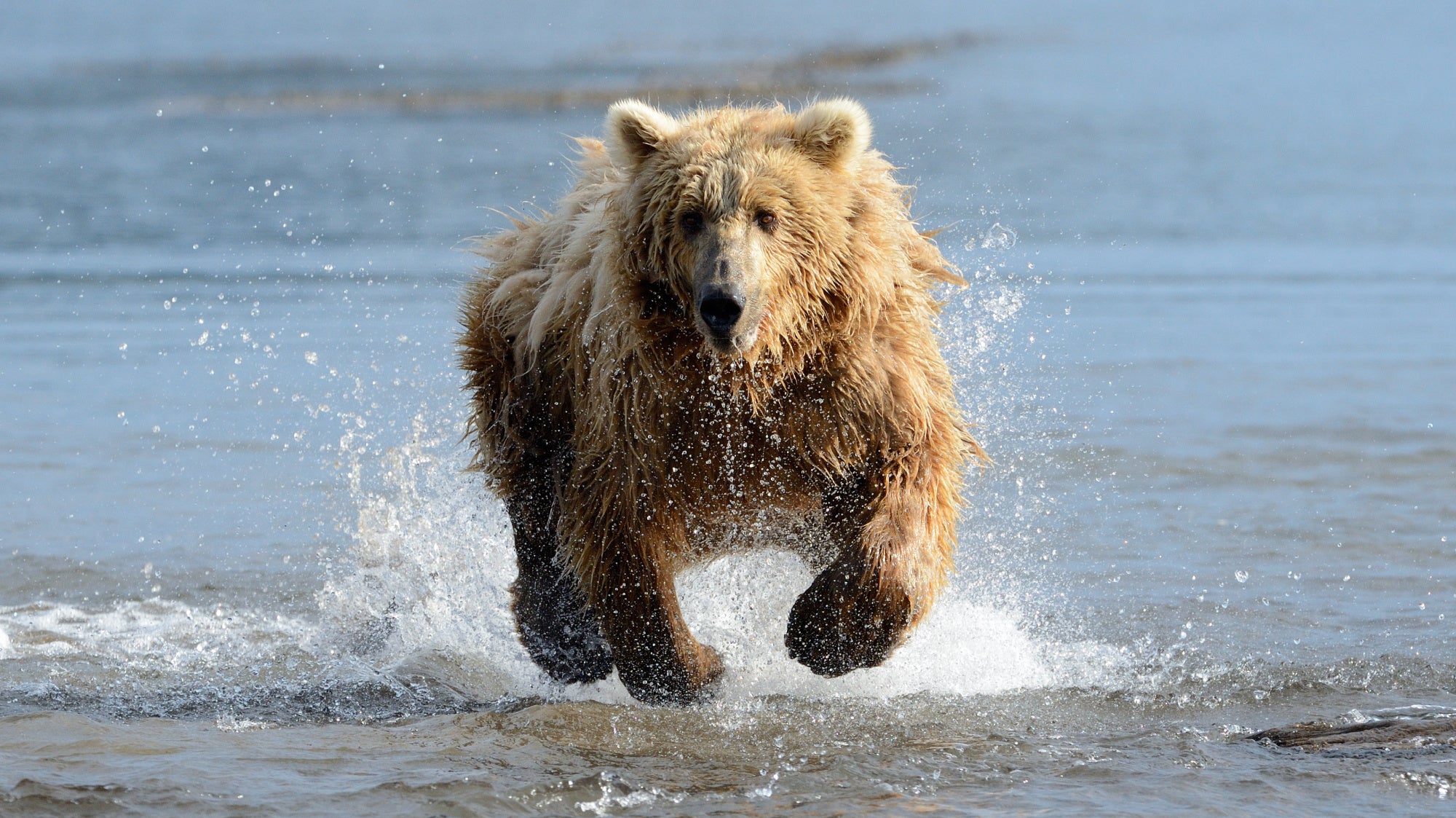
There are a few common rules about bear safety everyone should know. One key rule? Never run away from a bear. Not only can this trigger a prey-predator response in the bear, but your odds of outrunning a healthy adult bear are, well, nonexistent. Every species of bear in North America is fully capable of catching up to even the fastest human or dog in just a few seconds. In addition to putting on bursts of speed up to 40 mph, some bears can sustain speeds of 20 mph or more for miles. Let’s dive deeper into how fast different species of bears can run, why they’re able to run as fast as they can, and how fast you should be able to deploy your bear spray in the backcountry.
How Fast Can a Bear Run: A Species Breakdown
North America is home to three bear species: the black bear, the grizzly bear, and the polar bear. These species all have different top speeds because they all have slightly different body mechanics. For example, while healthy black bears and grizzly bears have more long-distance endurance, polar bears can only exert themselves in short spurts to avoid overheating, one study shows.
“Determining the maximum speed of any wild animal is fraught with difficulty,” Glacier National Park wildlife biologist John Waller says. “Some species have been clocked under controlled conditions, but for many, their speeds are based on estimates and anecdotal observations. This is true for bears.”
Despite the challenges, researchers have been able to establish benchmarks for the top land speeds of grizzly bears, black bears, and polar bears. Here’s what we know.
How Fast Can a Grizzly Bear Run?
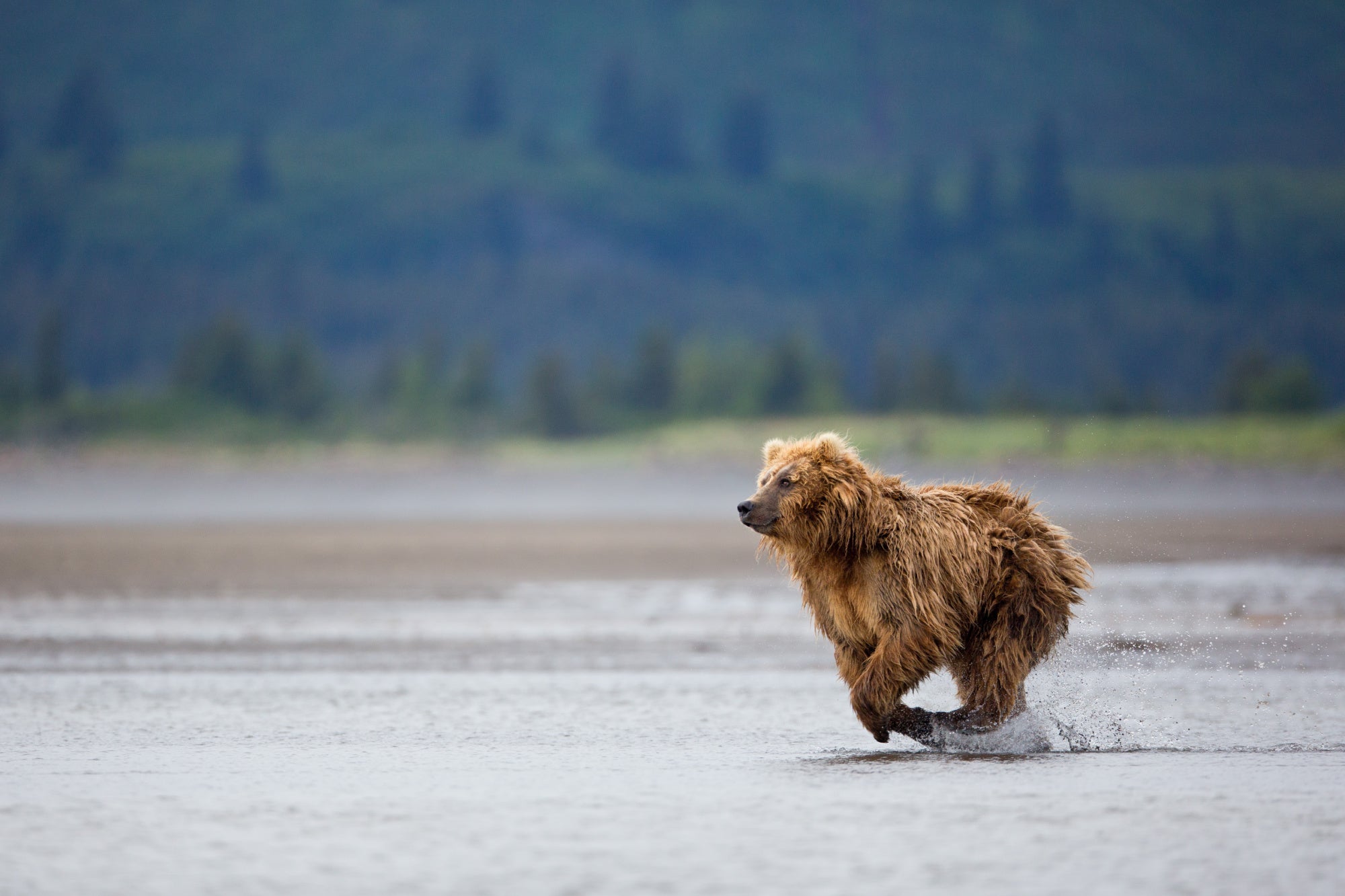
The grizzly bear, or brown bear, is the fastest bear in the world and can achieve a top speed of 40 mph, according to the National Park Service. Put another way, a grizzly bear running at top speed can cover about 20 yards in a single second.
What’s equally impressive is their ability to run fast—if not at that top speed of 40 mph—for longer than a few hundred meters. A few observations of a grizzly bear’s speed and endurance came from Yellowstone National Park in 1937, written by assistant park naturalist William Kearns.
“Grizzlies are powerful beasts, and as evidenced by [a report], have considerable endurance,” Kearns writes. “Covering two miles at from 25 to 28 miles per hour proves a stamina that would certainly try the best of horses.”
The report Kearns wrote describes an instance in 1930 when two naturalists drove to Norris Geyser Basin. Along the way, they came across a grizzly sow and two cubs in the road. They proceeded to follow the grizzly and cubs for two miles—while driving 25 mph all the way. Another incident involved a grizzly sow with two cubs chasing a series of cars on icy roads. During the pursuit, the grizzlies and cars topped out at roughly 28 mph.
How Fast Can a Black Bear Run?
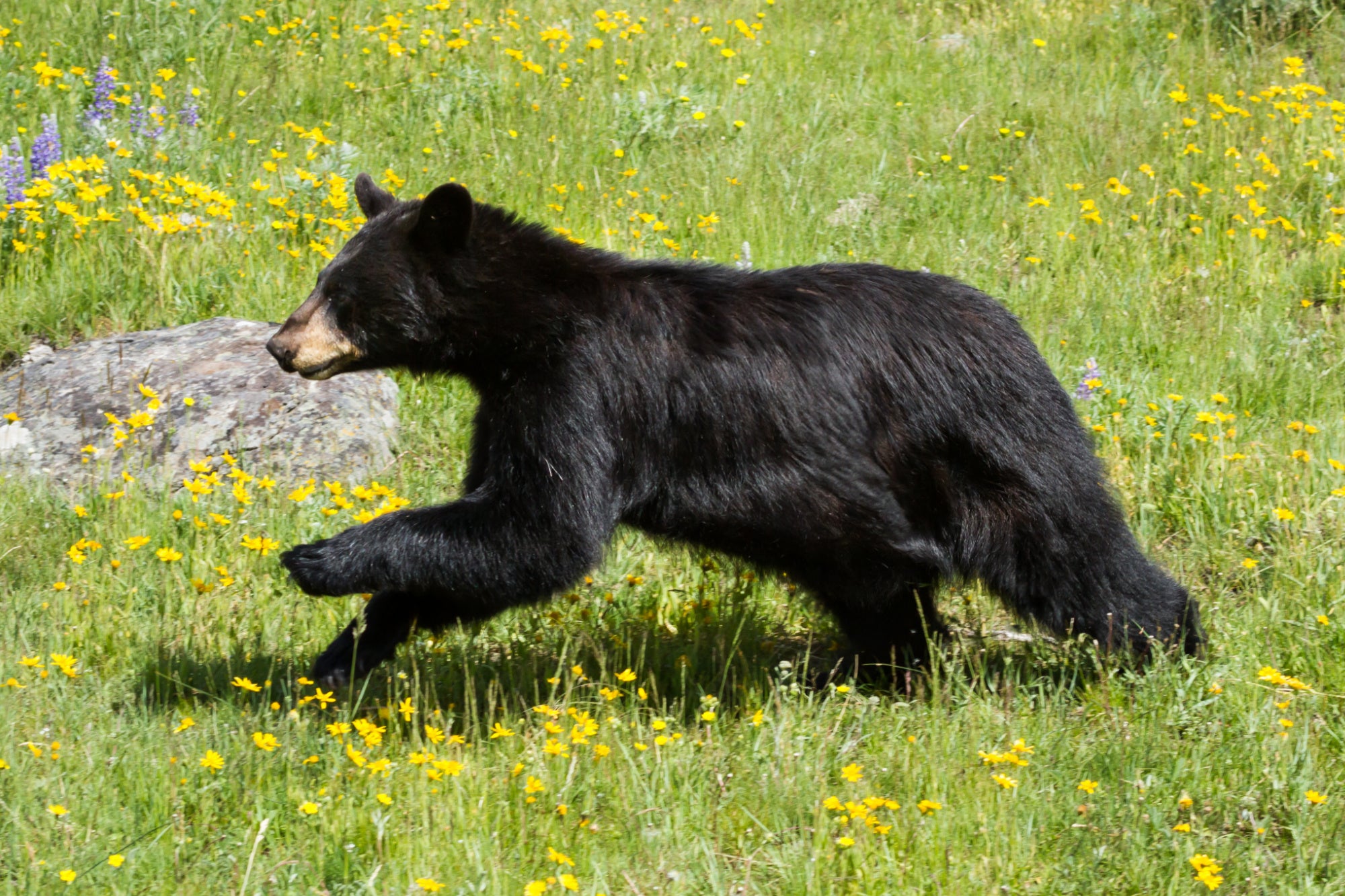
According to the North American Bear Center, black bears can also achieve top speeds of 30 mph when they’re lean. But if they’re bulked up for winter and have grown thick coats, they risk overheating if they run for too long. This might also be the case if they’re unnaturally large from eating human food. For example, a bear like Hank the Tank from the Lake Tahoe area probably couldn’t run 30 mph.
How Fast Can a Polar Bear Run?
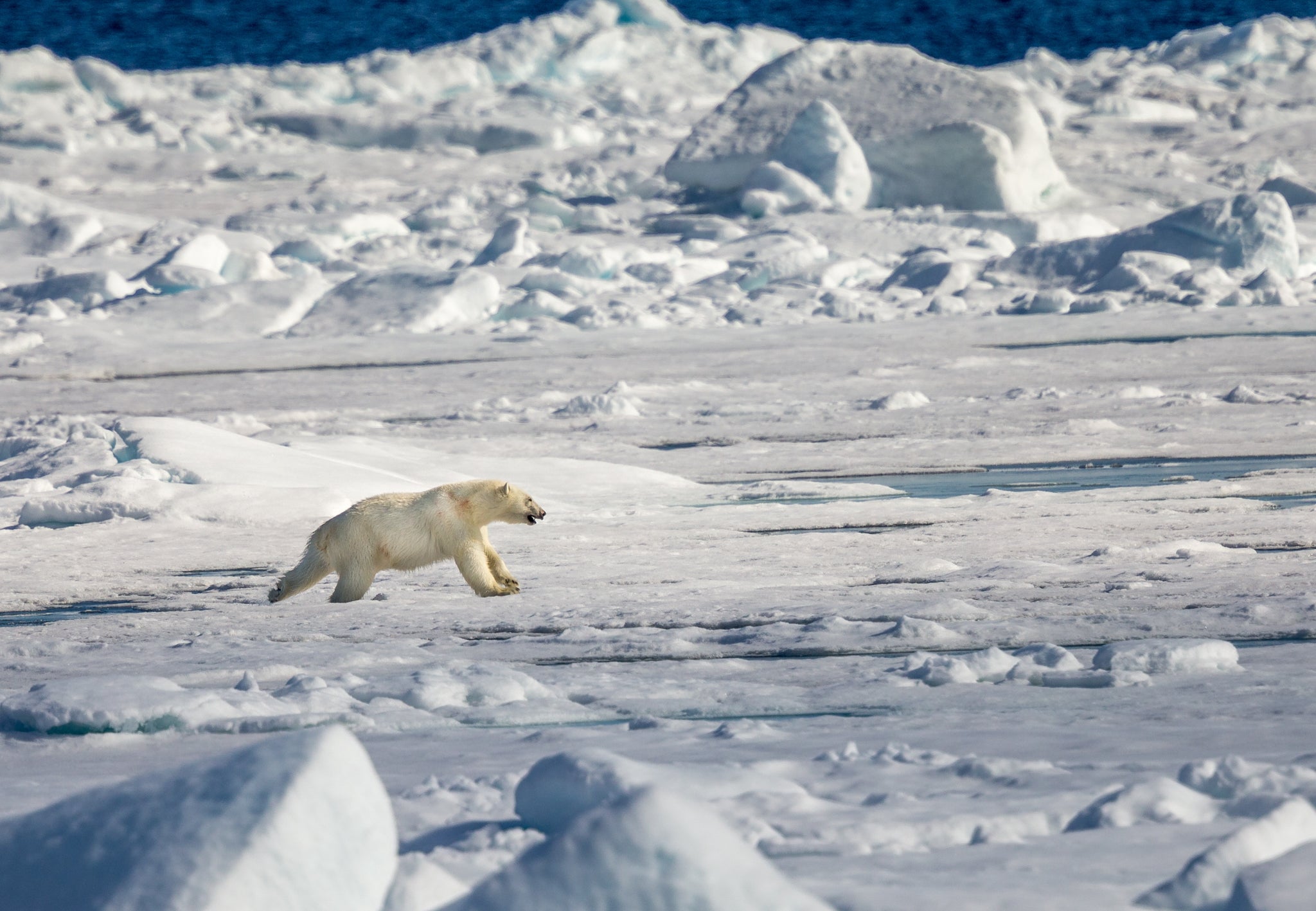
Polar bears have evolved to survive much colder temperatures than black bears and grizzly bears. This means they also overheat quickly and can only maintain their top speed of 25 mph for short bursts while chasing prey, but for no longer than roughly 30 seconds. They’re technically considered marine mammals since they swim and feed in the ocean, so they haven’t exactly evolved for cross-country running.
.embed-container { position: relative; padding-bottom: 56.25%; height: 0; overflow: hidden; max-width: 100%; } .embed-container iframe, .embed-container object, .embed-container embed { position: absolute; top: 0; left: 0; width: 100%; height: 100%; }
Researchers have discovered that a polar bear’s paws have significantly better traction than other bear species, enabling them to run more easily on ice and snow. This is due to larger papillae, or bumps, on their pads that help their paws cling to slick surfaces.
Why Can Bears Run So Fast?
Bears aren’t built like some of the faster land-mammals out there, including greyhounds, cheetahs, and pronghorn antelope. And yet, they’re able to run fast enough to violate suburban speed limits. How?
A bear’s speed is a byproduct of its biomechanics, or how the construction of its body is able to move and propel itself forward. Mammalian locomotion—or how mammals move around—remains an active area of research, Waller says. In other words, the reasons why bears can run as fast as they can remain something of a mystery. Still, there are a few key reasons that bears are slower than other land mammals but faster than we humans.
First, bears are plantigrade mammals. This means they walk with the whole surface of their foot on the ground. As a result, they’re not that efficient compared to other land mammals. In other words, it takes more effort for them to run than, say, the unguligrade pronghorn (which runs on hooves) or digitigrade cheetahs (which run on their toes). Other examples of plantigrade mammals include humans, raccoons, wolverines, badgers, porcupines, and rabbits. Bears are the largest plantigrade mammals, and they’re at their most economical gait when they’re walking. But they’re also quite strong, which might explain why they can run as fast as they can. They also have the added benefit of being quadrupeds (or four-legged animals), which are significantly faster than upright bipeds (or two-legged animals).
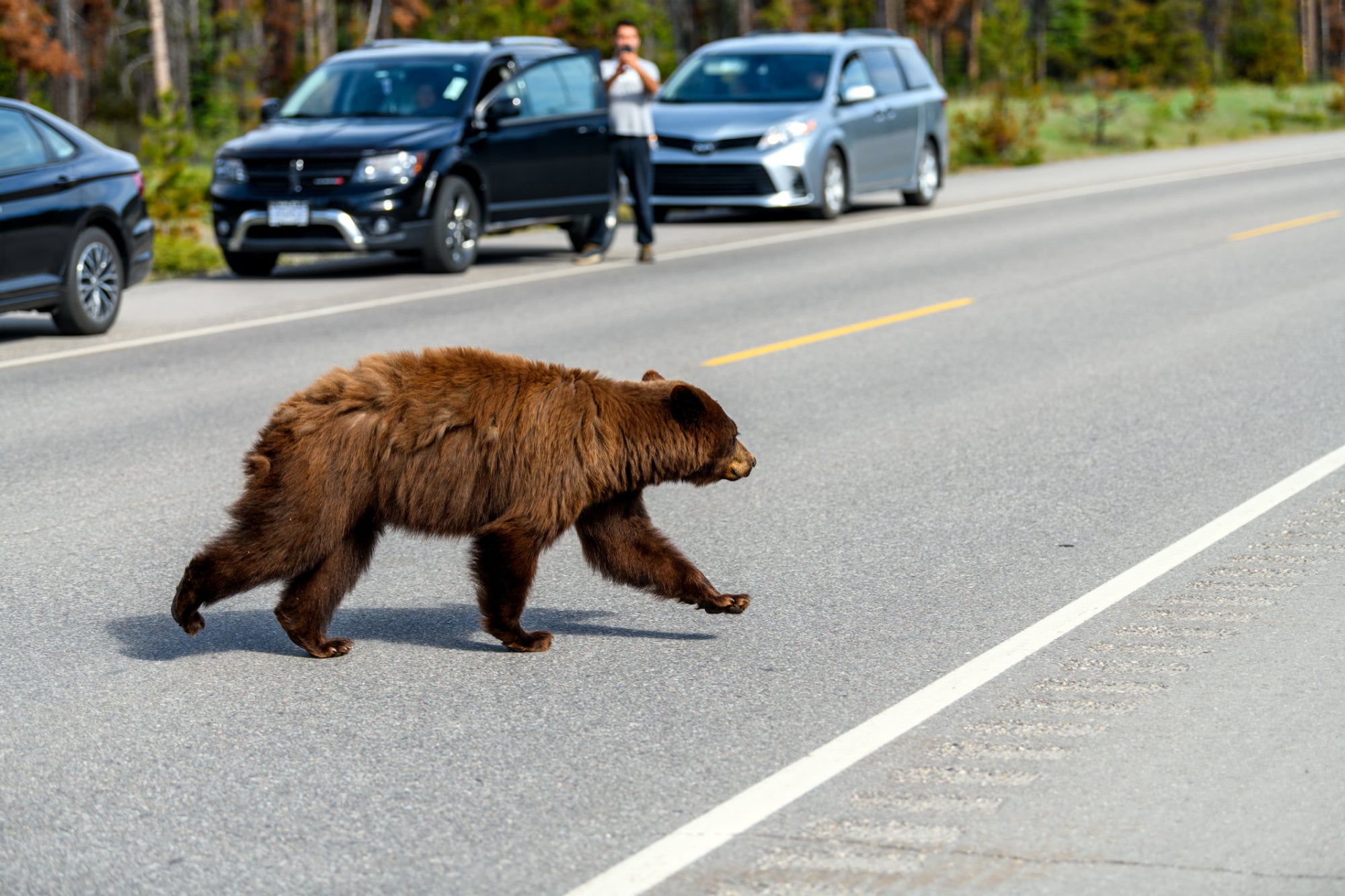
For comparison, here are a few recorded top running speeds of mammals:
- Humans: 23.35 mph (the fastest recorded 100-meter dash, run by Usain Bolt in 2009)
- Cheetahs: 70 mph
- Pronghorn: 60 mph
- Greyhounds: 45 mph
- Racehorses: 49 mph (the speed record set by Triple Crown winner Secretariat in 1973)
Why You Should Never Run From a Bear
When bears are healthy, both their speed and endurance make them formidable predators.
“Black and grizzly bears are powerful animals and are capable of tremendous speed for prolonged distance,” Waller says. “They are not unusually fast or physiologically unique compared to other plantigrade mammals, but they are much faster than any human.”
Unfortunately, it might take some conscious effort on your part to overthrow your fight-or-flight response and not turn to run away. If you can manage to avoid it, you massively increase your chances of surviving the encounter unscathed.
“Running is a natural response to fear and often people instinctively retreat when they see a bear at close range,” Waller says. “It is very common for people’s feet to automatically go into reverse, but this usually results in them falling over backwards. So, not only are you unlikely to be able to outrun the bear, but you may not be able to stay on your feet.”
Instead, follow key bear safety rules: If the bear is stationary, move away slowly and sideways, advises the NPS. This tactic lets you keep an eye on the bear and avoid tripping. Sideways movement is also relatively non-threatening. If the bear follows you, stop moving and hold your ground.
How Fast to Deploy Bear Spray
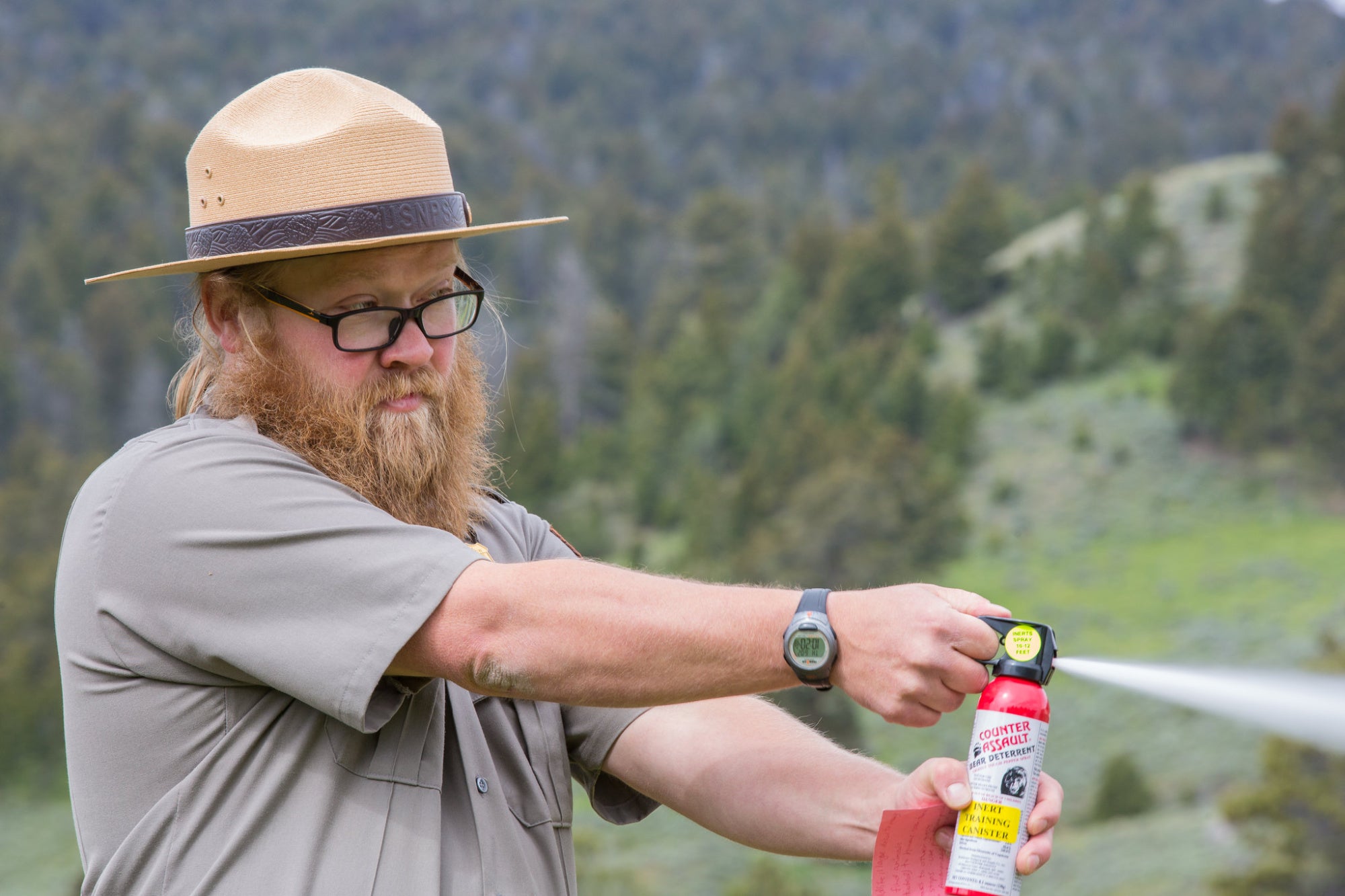
If you plan on spending time outdoors in bear country, you should absolutely learn to carry and use the best bear spray on the market. But how fast should you actually be able to deploy it?
Think like a quick-draw dueler in an old Western. Waller says that, with practice, you should be able to grab your bear spray, remove the safety clip, and start spraying in roughly two seconds. If you choose to carry a bear defense handgun, you should be able to grab it similarly fast and know where to shoot a bear in a defensive situation. The demand for this quickness stems from the surprise nature of most bear encounters.
“The ‘surprise encounter’ occurs when people inadvertently get too close to bears, usually where visibility or hearing are impaired, for example by brush or moving water,” Waller says. “It makes sense to keep your bear spray where you can access it quickly. With practice, a person can discharge their bear spray from their hip holster in less than two seconds.”
This is why keeping your bear spray buried in your backpack or even in a hard-to-reach place like a water bottle sleeve is basically pointless. If you’re in a situation that requires bear spray, you won’t have time to unzip your pack and fish around for the canister.
The good news is that, once you have it in-hand with the safety clip removed, you don’t have to worry too much about aiming.
“Because the bear spray is discharged in an expanding cloud, aim is not that important,” Waller says. “The best tactic is to freeze, assess the situation, and deploy your bear spray if warranted. More often than not, the bear will retreat before you can react.”
Bear Speed FAQs
How fast is the fastest bear in the world?
Grizzly or brown bears are the fastest bear species in the world. They’ve been recorded topping out at around 40 mph.
Can you zig zag a bear?
The age-old adage of running in a zig-zag pattern to evade predators isn’t recommended. This myth seems to mostly apply to running away from alligators, which has been debunked. Instead of trying to see if such a move would actually work in a bear encounter, follow basic bear safety rules instead. Resist the urge to run, instead slowly moving sideways away from a bear. If the bear follows, stop moving and hold your ground.
Can you escape a grizzly bear on a bike?
In most situations, no. If you were to race a grizzly bear in a hypothetical long-distance road race, you might win on a bike. Professional cyclists with good gear and training can reach up to 50 mph while biking on flat, even pavement. But that doesn’t mean escaping a grizzly bear on a bike in the wilderness is a good idea. A fall or a wrong turn could be fatal, and there’s no way you would be able to bike faster than a grizzly can run (40 mph) on uneven terrain.
Final Thoughts on How Fast a Bear Can Run
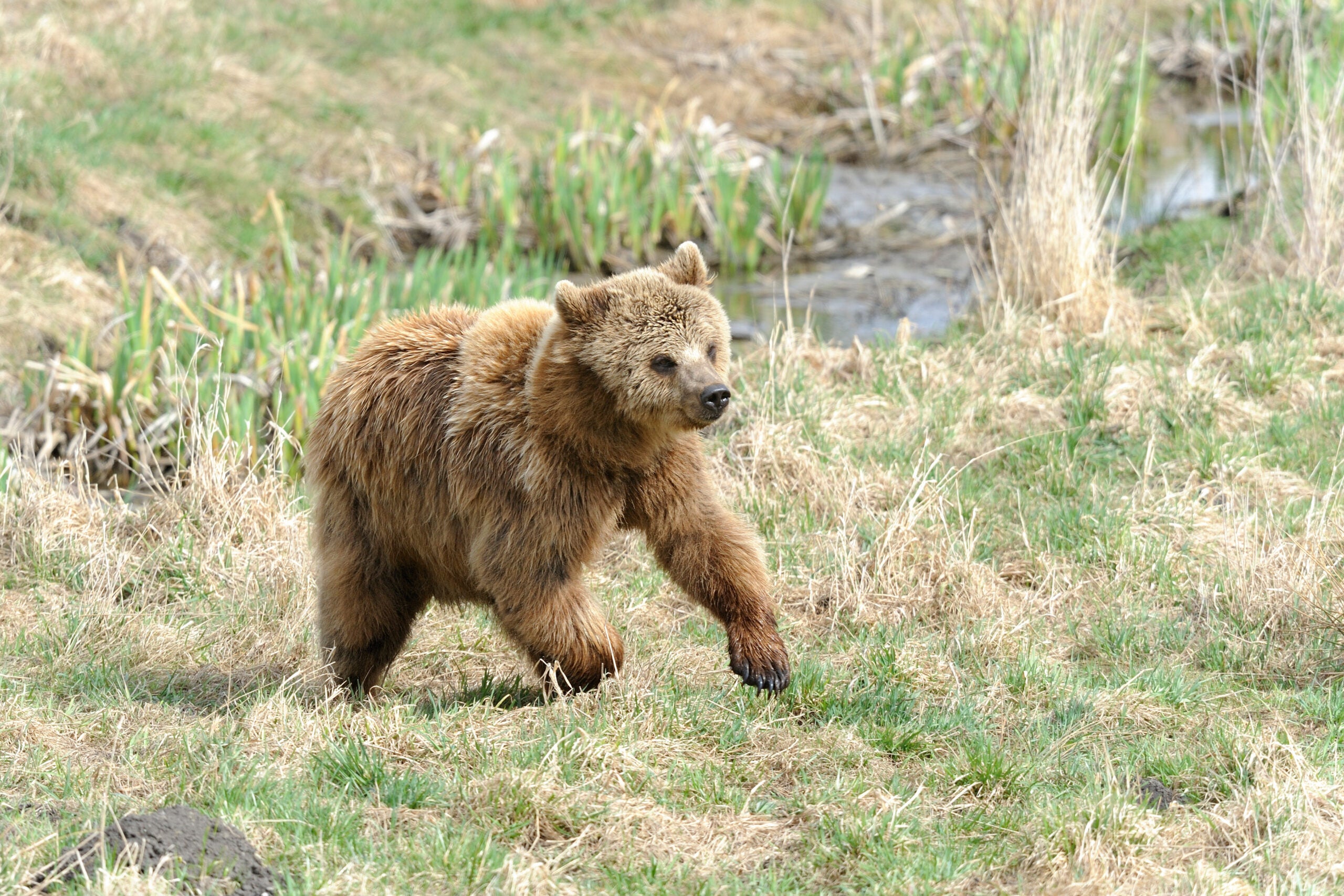
No matter which species of bear you encounter, running away is never a smart option. Even if you’re facing a slower bear with less endurance, like a polar bear or a black bear fattening up for the winter, it’s capable of catching up to you shockingly fast. Your attempt to escape will likely only trigger a predatory chase instinct. And if you’re facing a grizzly bear, which also happens to be the fastest bear species in the world, you really don’t stand a chance. Instead of running, make a lot of noise, grab your bear spray, and hold your ground.
The post How Fast Can a Bear Run? appeared first on Outdoor Life.
Articles may contain affiliate links which enable us to share in the revenue of any purchases made.
Source: https://www.outdoorlife.com/survival/how-fast-can-a-bear-run/



